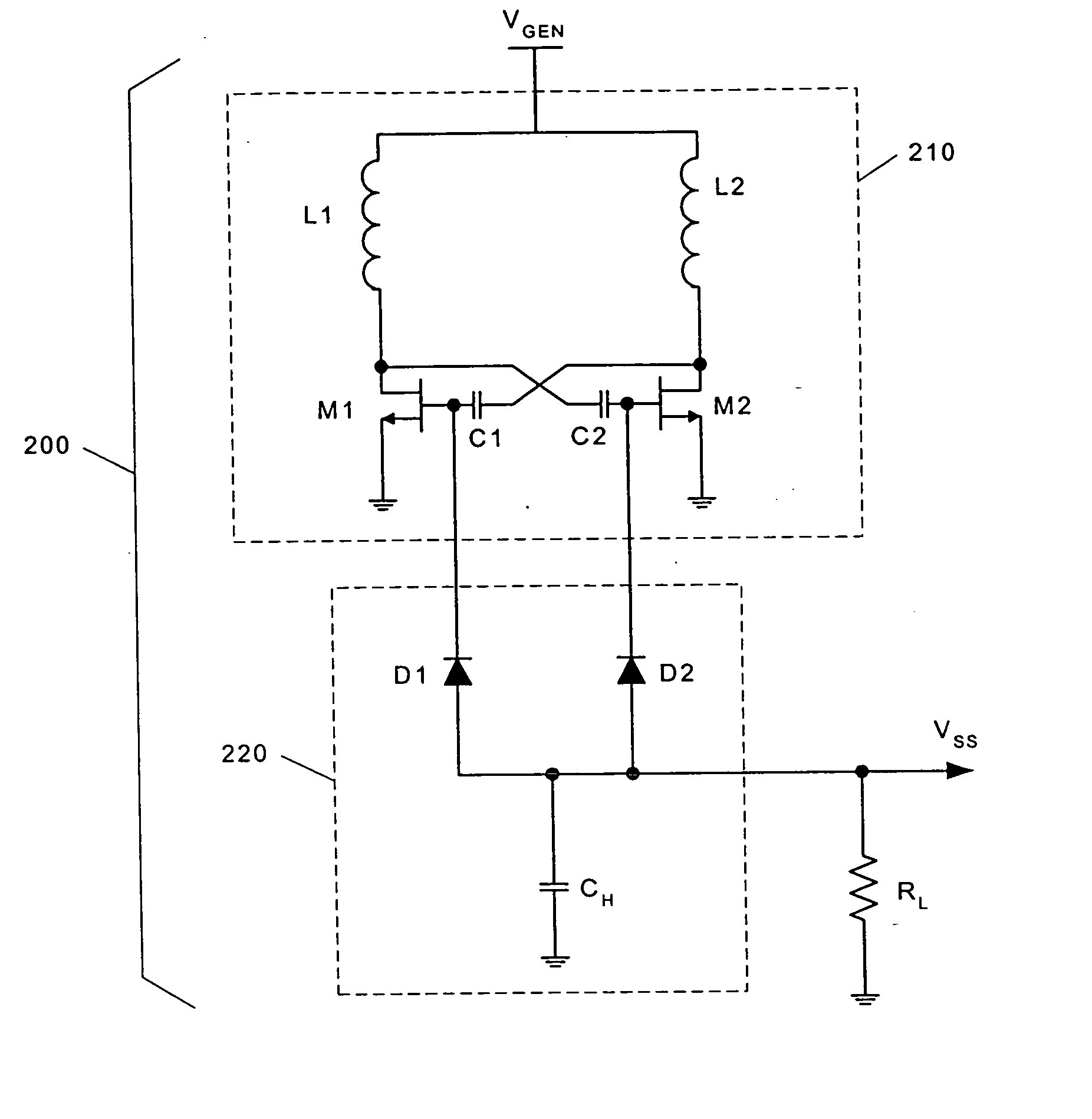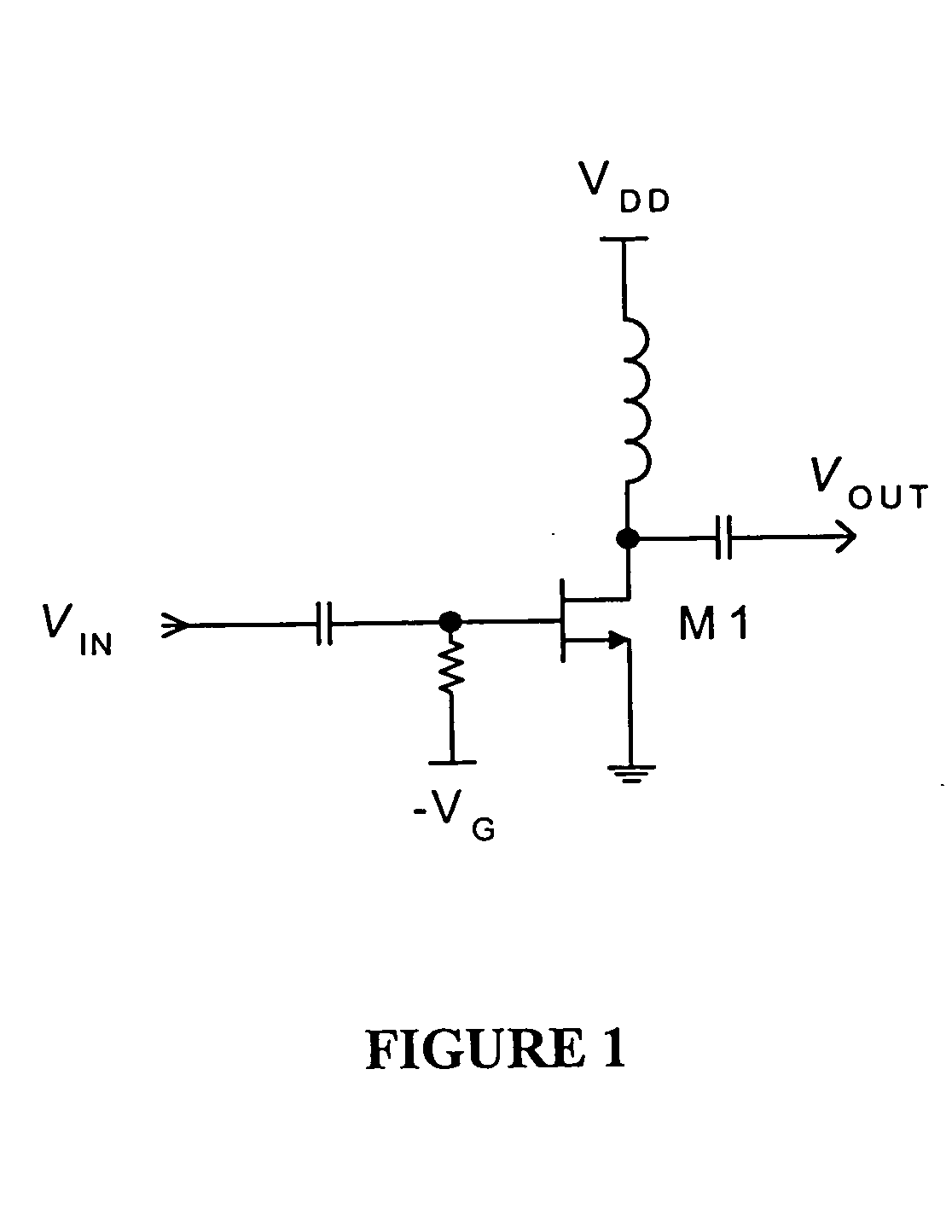MMIC DC-to-DC converter
a dc-to-dc converter and converter technology, applied in the direction of dc-dc conversion, power conversion systems, instruments, etc., can solve the problems of large negative, large die space on the integrated circuit, and the possibility of d-mesfet being disabled or powered down, so as to improve power efficiency and start-up reliability, the effect of reducing the die area
- Summary
- Abstract
- Description
- Claims
- Application Information
AI Technical Summary
Benefits of technology
Problems solved by technology
Method used
Image
Examples
Embodiment Construction
[0018] With reference to FIG. 3, a microwave DC-to-DC negative voltage converter 300 in accordance with the present invention comprises differential oscillator 310, rectifier 320, and startup circuit 330. Differential oscillator 310, like the prior art differential oscillator 210 described above, comprises inductors L1 and L2, transistors M1 and M2, and capacitors C1 and C2, which are connected in the well-known transistor astable multivibrator configuration. In the present invention, however, inductors L1 and L2 are cross-coupled, interleaved spiral conductors of the type described in U.S. Pat. No. 5,892,425 to Kuhn et al. and shown in FIG. 4. The spiral conductors are arranged in the same plane on the substrate and connected to voltage supply VGEN and transistors M1 and M2 in such a way that inductors L1 and L2 are mirror images of each other. This configuration allows nearly perfect symmetry of the two inductors, which enables such a highly-balanced circuit operation that even-or...
PUM
 Login to View More
Login to View More Abstract
Description
Claims
Application Information
 Login to View More
Login to View More - R&D
- Intellectual Property
- Life Sciences
- Materials
- Tech Scout
- Unparalleled Data Quality
- Higher Quality Content
- 60% Fewer Hallucinations
Browse by: Latest US Patents, China's latest patents, Technical Efficacy Thesaurus, Application Domain, Technology Topic, Popular Technical Reports.
© 2025 PatSnap. All rights reserved.Legal|Privacy policy|Modern Slavery Act Transparency Statement|Sitemap|About US| Contact US: help@patsnap.com



